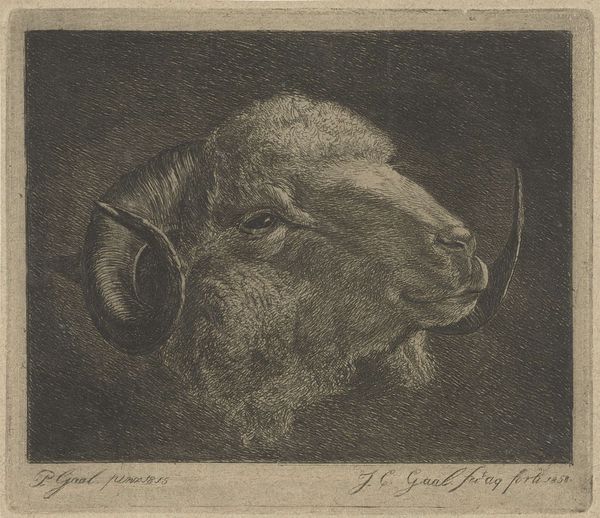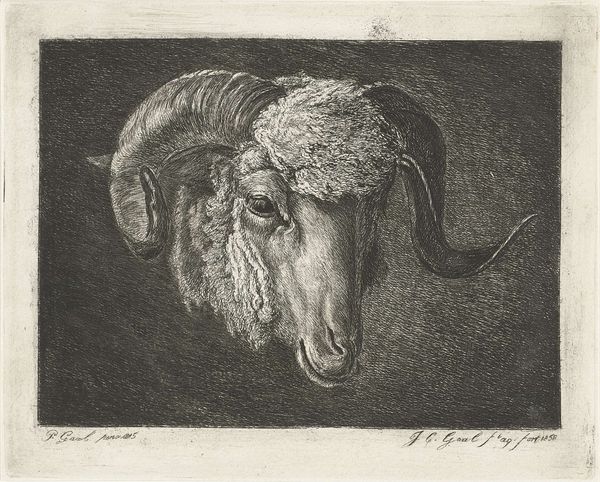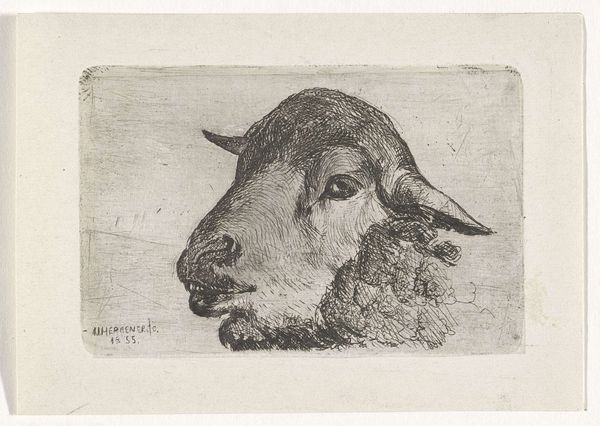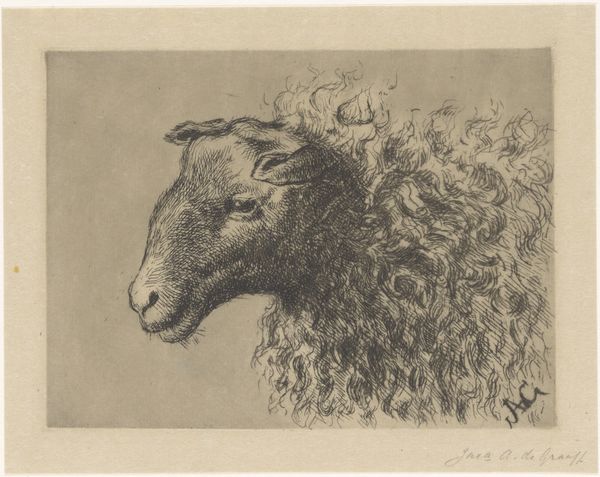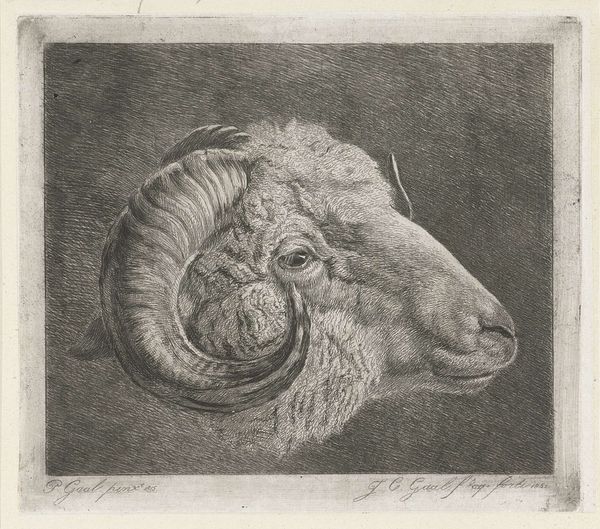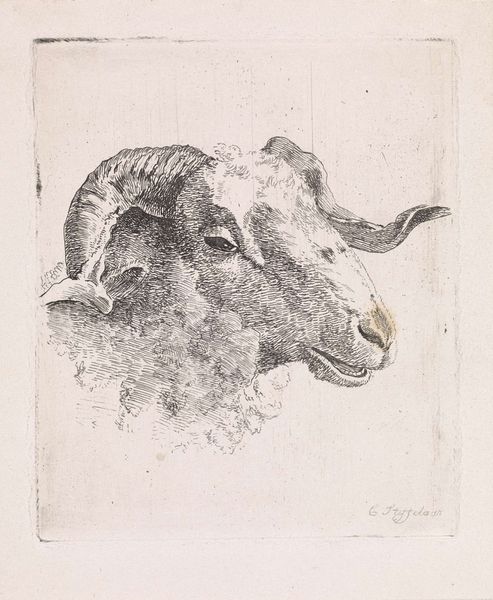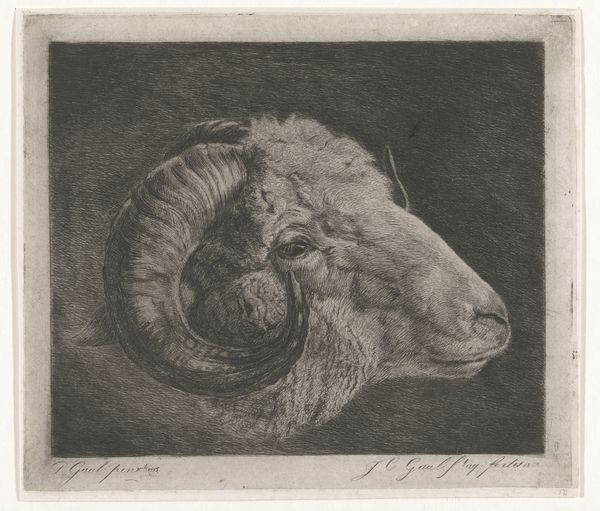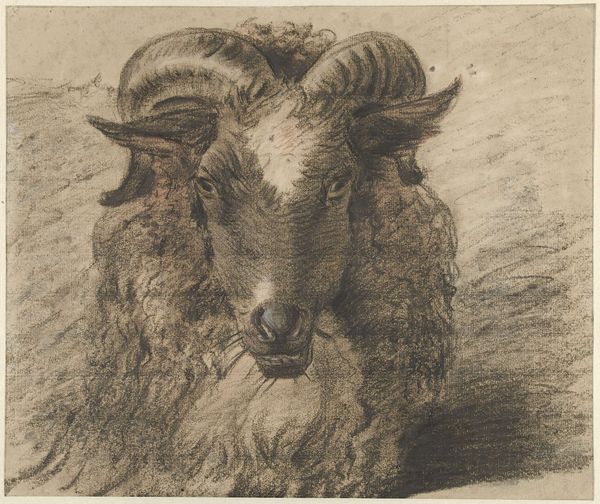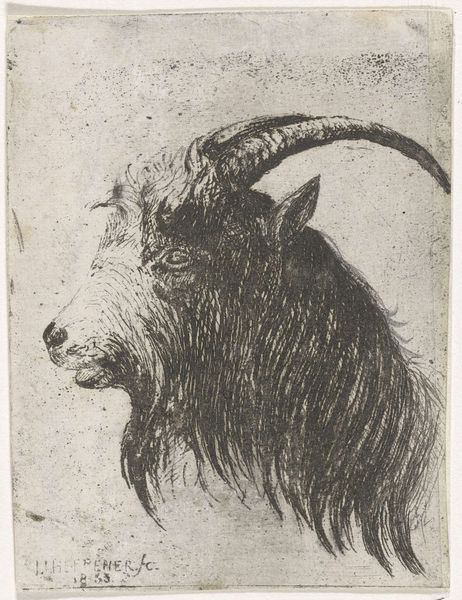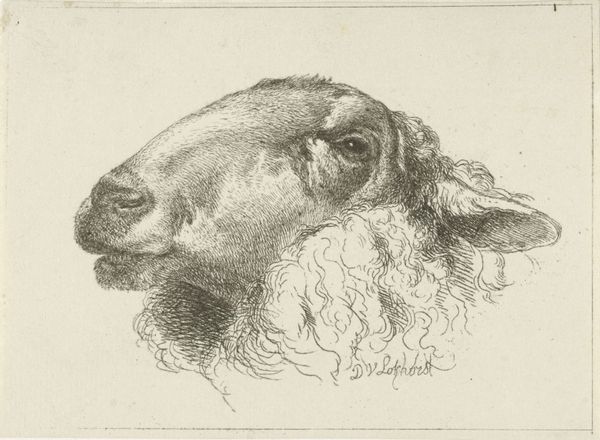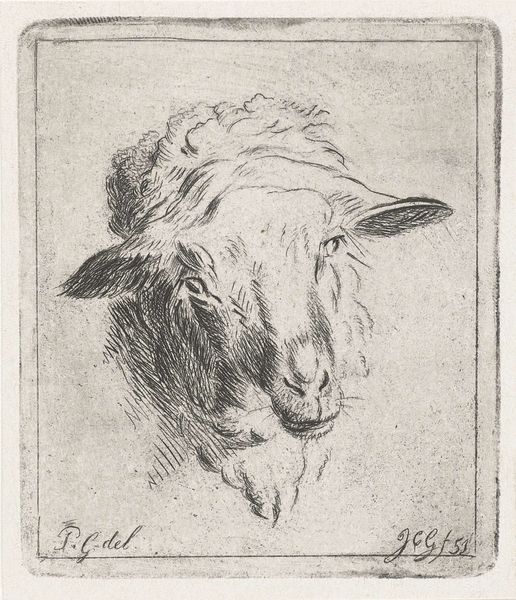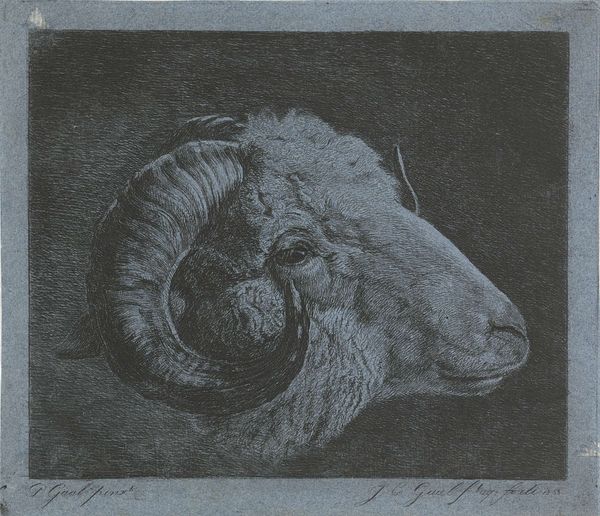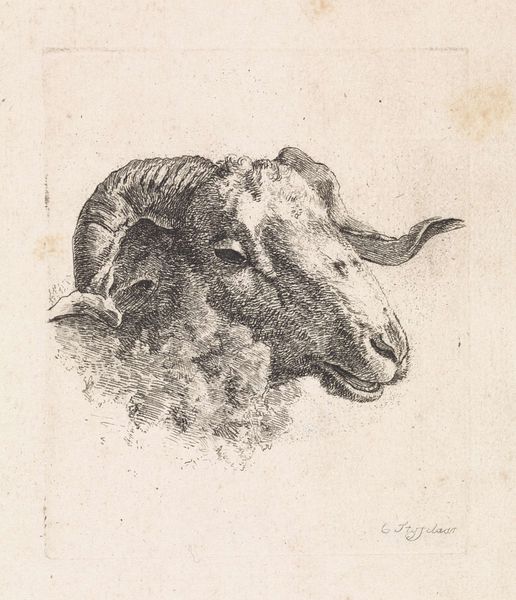
#
pencil drawn
#
amateur sketch
#
toned paper
#
light pencil work
#
pencil sketch
#
old engraving style
#
charcoal drawing
#
pencil drawing
#
pen-ink sketch
#
pencil work
Dimensions: height 125 mm, width 145 mm
Copyright: Rijks Museum: Open Domain
Curator: Jacobus Cornelis Gaal’s "Head of a Ram with Horns Turned Backwards," created in 1858, presents us with a compelling portrait rendered in a drawing. Editor: My immediate reaction is one of starkness. The intense hatching technique gives it a raw, almost confrontational presence despite being a somewhat simple sketch. The ram appears dignified, almost stoic, emerging from the darkness. Curator: It’s interesting you say confrontational. Works depicting animals often carried symbolic weight during that period. The ram, traditionally associated with virility and strength, can also symbolize stubbornness, even sacrifice. Examining Gaal’s societal standing helps unpack potential underlying motives or public statements made using such potent imagery. Editor: Precisely! The ram could then be interpreted as a symbol of resistance, particularly relevant perhaps within specific political climates of 19th century Europe. How did representations of animals circulate, what political charges were loaded onto them by the press? Curator: Beyond symbolism, I find myself intrigued by Gaal’s artistic choices. The incredibly tight lines evoke texture while almost vibrating, don't they? Consider how his engagement with detail, seen especially around the eye and the curving horn, brings an incredible vividness to this seemingly straightforward portrait. Editor: The gaze, especially. I mean, whose gaze exactly is Gaal inviting us to consider? I appreciate your art historical precision. Yet this very specific depiction risks trapping animalistic representation into established structures where gendered and racial power are at stake. Curator: Your perspective illuminates overlooked narratives. I might previously have viewed the piece simply in the realm of representational mastery, failing to examine embedded hegemonies. Editor: And understanding context opens paths towards liberating what we see and why. Curator: Indeed, it seems appreciating any artwork demands engaging in multifaceted interrogation rather than adhering to some neutral or universally applicable method. Editor: A shared journey, one that evolves as new understandings surface.
Comments
No comments
Be the first to comment and join the conversation on the ultimate creative platform.
